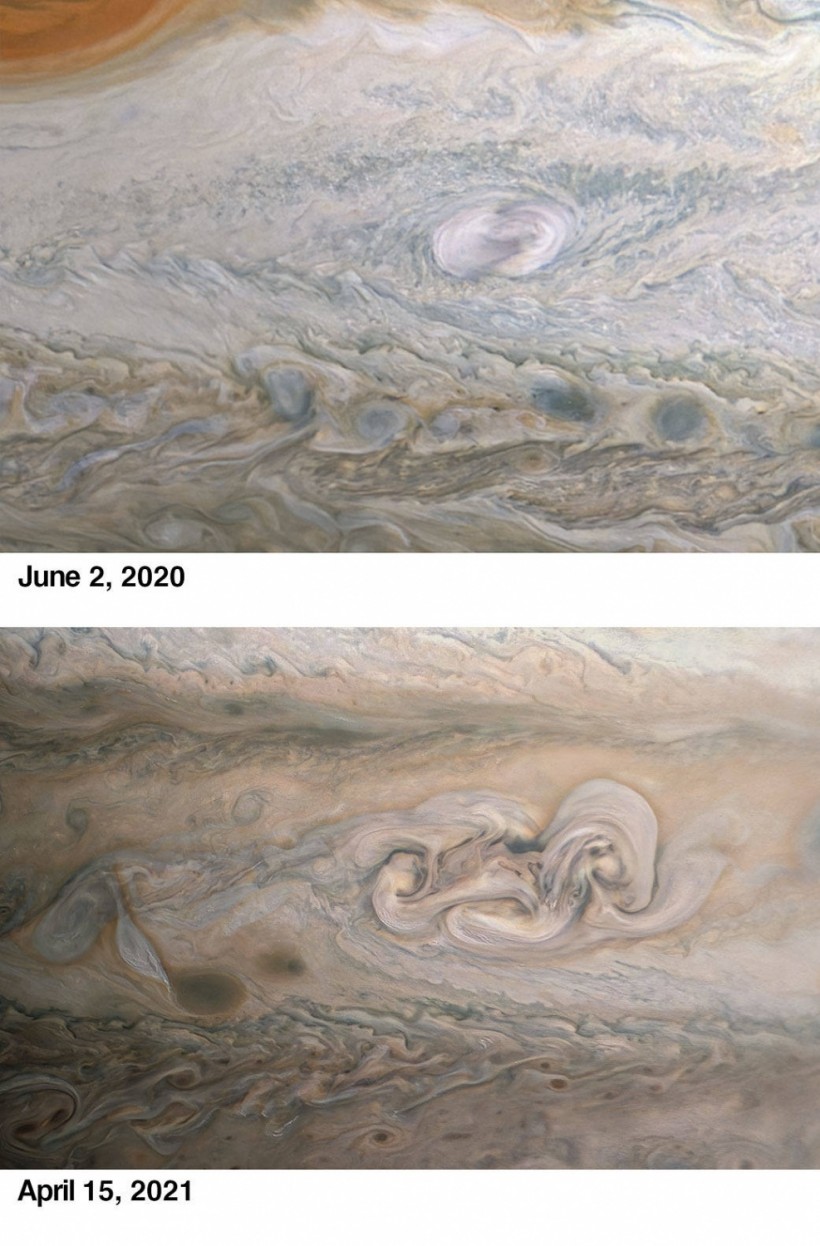For a while, NASA has been in a close encounter with Jupiter through its Juno spacecraft. Before, the most enormous planet in the solar system had only the prominent "Great Red Spot," a beautiful portrayal of an anticyclonic storm that formed in its region.
The new-age discovery does not only cover the high-pressure region in Jupiter's atmosphere. To date, NASA's probe has captured a picture-perfect look of the "Clyde's Spot" this 2021.
Clyde's Spot Is Named After An Astronomer

Clyde's Spot on Jupiter as captured by Juno
The newly unveiled feature on Jupiter was dated back to 2020, when Clyde Foster, an amateur astronomer, found it. The uncovering has given birth to the oval-shaped "Clyde' Spot," which was named after its pioneer.
This year, there is a reunion that followed, and NASA scientists described its unique attributes. Compared to the Great Red Spot, there are contrasting descriptions made to highlight how it differs from Jupiter's most prominent feature.
In an illustration posted by NASA on Tuesday, May 18, Clyde's Spot was painted as a "plume of cloud material" bursting on top of the Jovian atmosphere of Jupiter.
Read Also: NASA Hubble Telescope Witnesses an Explosion of a Star--Scientists Explain this 'Unusual' Supernova
Since the huge planet is said to be a home of strange formations in the atmosphere, many of them cannot be seen for a long moment. However, that is an exemption of Clyde's Spot, which seems to be taking its strong shape upon revelation.
In addition, the international space agency made it possible through the Juno spacecraft, which had glimpsed its minute beauty. NASA said that Clyde's Spot has this so-called "folded filamentary region," which is two times bigger than the Great Red Spot when it comes to latitude. Its herculean longitude is thrice the former.
Scientists from NASA believe that the presence of this formation could be extended for a longer time--more time for space-viewing its otherworldly features.
Clyde's Spot 2020 vs 2021 Version

Clyde's Spot in 2020 and 2021
According to CNET's report, what Juno came up with was a striking difference from the much smaller Clyde's Spot after a year. It also appeared that it was driving away from the colossal Red Spot.
The observation that Juno concluded in 2020 about Clyde's Spot is its compact look. A year later, the probe saw irregular swirls on its surface, which resembles the hushing pattern in the water.
With the help of the data gathered by Juno, Kevin Gill was able to improve the quality of the images so that the team could spot the continuous changes in the new spot.
It will take some years before Juno's mission comes to a halt since its mission will continue until 2025. The discovery of Clyde's Spot is only one of Juno's greatest findings which proves that Jupiter's charm is something that all should behold.
Related Article: NASA Hubble's Near-InfraRed Imager Jupiter's Atmosphere Using Different Lights-One Photo Looks Scary
This article is owned by Tech Times
Written by Joseph Henry








